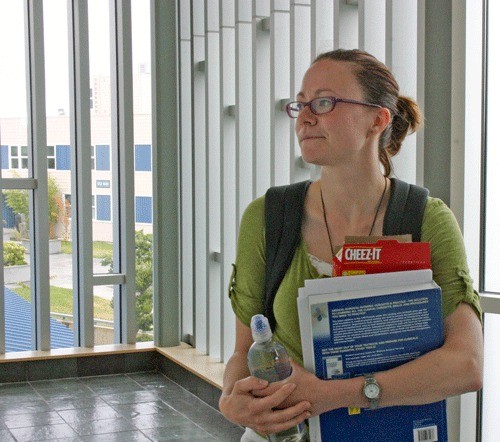Skagit Valley College and Running Start students on Whidbey Island may need to start penny pinching.
The State Board for Community and Technical Colleges passed a new tuition schedule in late June that will raise tuition to the maximum amount allowed by the state Legislature in the 2011-13 operating budget.
Full-time students will see the largest increase, with tuition going up 13 percent from the current $3,100 to $3,500 annually. Part-time students will face an 11 percent increase.
The increase will help close the $77.4-million gap left in the community and technical college system’s state budget in fiscal year 2012, though it will not fully make up for the loss.
“While we understand the need to raise tuition given the dire fiscal situation we find ourselves in, we are concerned about what this increase means for students,” Sharon Fairchild, incoming SBCTC board chair, said in a press release. “This is a very difficult decision to make.”
The board also approved a measure that places a cap on the number of Running Start credits a high school student can take at a community college tuition-free. For the first time in Washington state history, the Legislature has limited the number of combined high school and Running Start credits it will fund.
In years past, a Running Start student could register for 10 college credits and attend high school full-time and the state would fund both. Under the new restriction, the state would pay for only three of those 10 college credits. Colleges will now charge tuition on any credit a high school student chooses to take beyond a full course load. However, those who take no more than a full load between high school and college credits will still be state funded.
The new limitation comes at an especially difficult time for many high school students who were working to build up college credits now in order to save money on their undergraduate degrees at a four-year university later. Recently, the state’s four-year universities all raised tuition between 11 and 20 percent.
“I think the increases in tuition and fees will certainly impact some if not many students,” SVC Executive Vice President Mick Donahue said, “especially part-time students or students who do not qualify for some type of financial aid.”
Nursing student Anita Carmichael was surprised to hear about the tuition increase and didn’t know how some students would be able to manage it. Carmichael is fortunate because her employer is going to start paying for her courses in the fall, but for the past year she said it was a struggle just to come up with the current price of tuition.
“It takes me two full paychecks to try and cover tuition,” Carmichael said. “It’s money that gets taken out of my daycare and groceries.”



